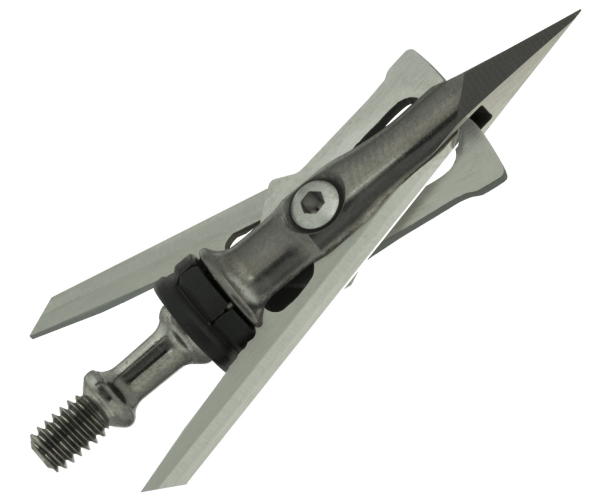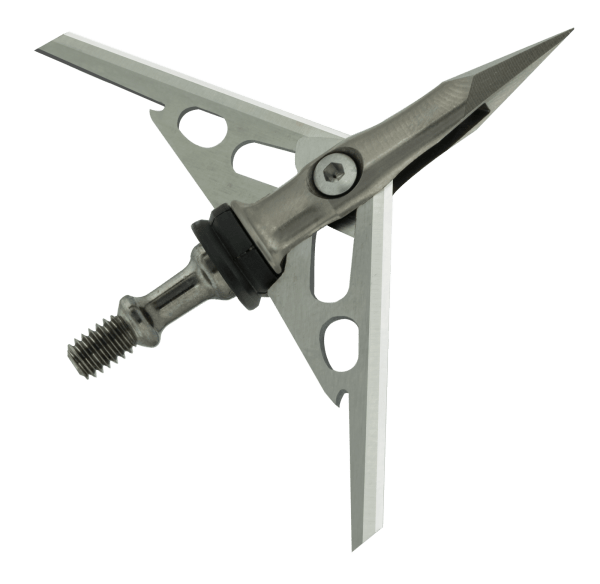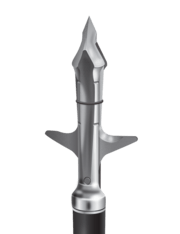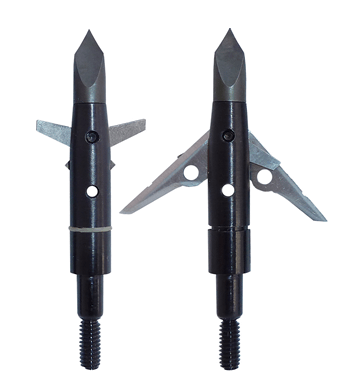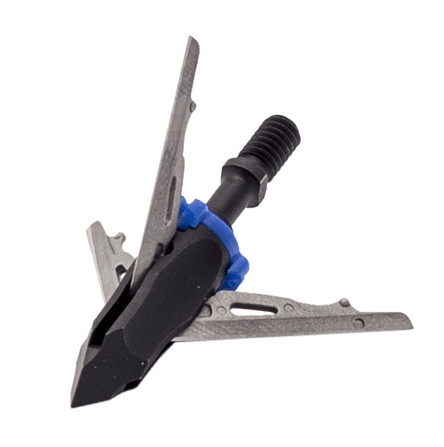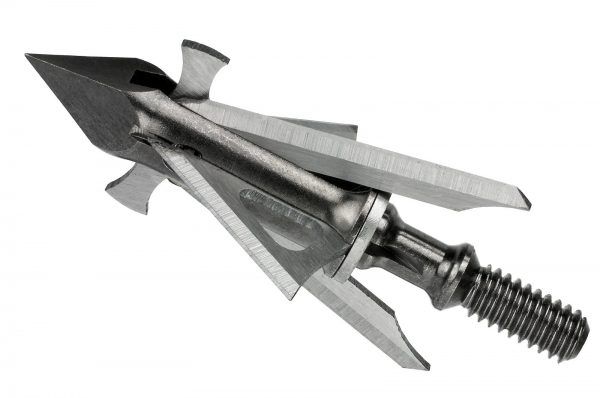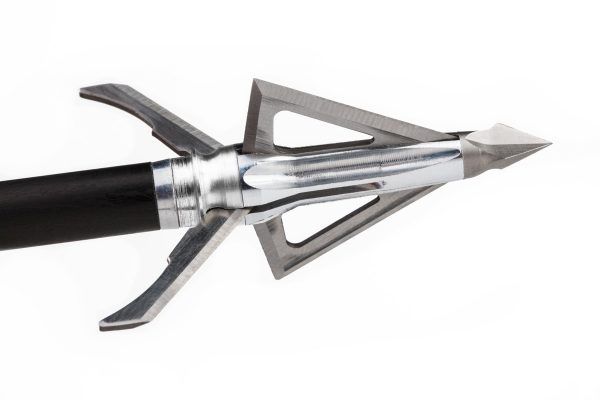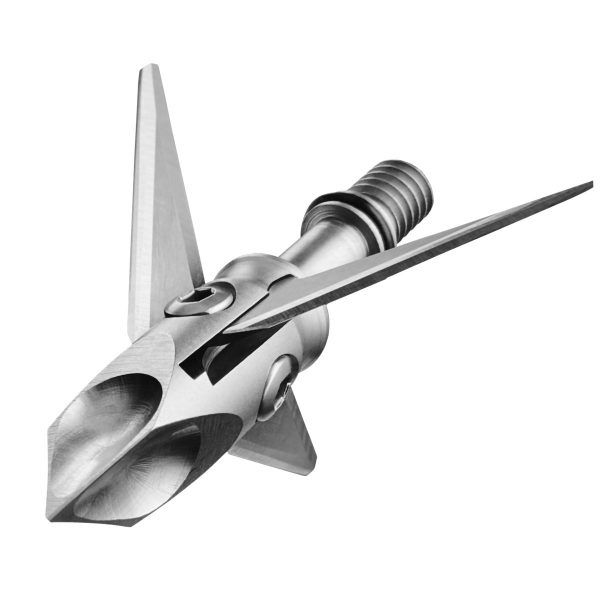
When choosing a broadhead for your first hunt, chances are that you will probably buy the same broadhead as your friend, or the favourite broadhead of the salesperson at the shop.
On one hand, that is good, because you already know where to go for help with that particular piece of equipment, and you also know that the particular broadhead has proven itself in the hands of the person that suggested it.
On the other hand, their set-up, preparation and tuning might differ quite a bit from your own, which means it might be the worst possible choice for your first few hunts.
In the end, your bow is a weapon, and its your responsibility to make the best possible, most well informed decisions on how you will be using it in a hunt. Not only because you want success on your hunt, but also because its your moral and ethical responsibility to ensure the animal you will harvest will go down quickly and with the least amount of suffering.
Whether you get mechanicals or fixed blade broadheads, you will have a choice of 2, three or four bladed heads (going up to 6 if you count the bleeders) but lets look at the basics first.
One thing to keep in mind before you decide… no broadhead is foolfproof or damage proof. Whether mechanical or fixed blade, any damage can negatively impact accuracy and penetration of your arrow. If you end up re-using broadheads, make very sure that the head is still good!
Fixed Blade Broadheads
 In this category you will find single bevel heads like the CutThroat, three blade fixed like the G5 Montec or replaceable blade units like the SlickTricks. These are not the only ones… there are literally hundreds of different broad heads out there!
In this category you will find single bevel heads like the CutThroat, three blade fixed like the G5 Montec or replaceable blade units like the SlickTricks. These are not the only ones… there are literally hundreds of different broad heads out there!
In general, these blades have better penetration because the angle of the blades are much sharper, and the actual cutting diameter (furthest point to furthest point) is smaller. Better penetration is critical when shooting low poundage, so definitely something to look at if you are shooting lighter draw weights.
You will also often find that the head doesn’t damage so easily, and the blades can often be resharpened.
However, arrow tuning is critical, as is bow tuning. The exposed blades are active flight surfaces that, if your tuning isn’t spot on, will negatively impact your accuracy, from off angle shots, to spirals (hit left on 20yds, but hits right on 30yds) and the faster your arrow flight, the more this becomes an issue.
Pros
- Better penetration
- Often Re-usable
- Higher weights for more FOC
Cons
- Smaller cutting diameter, accuracy is critical
- Arrow and bow tuning is critical
- Bigger flight surfaces can cause less accuracy in bad weather
Mechanical Broadheads
 In this category, the most famous heads are probably the Rage range of heads in two and three blade configurations like G5 Havoc and Deadmeat series or the Schwacker heads or Ulmer Edge style heads. The heads come in many variations for the tips with the general design split into two main groups: bone splitting chisel tip, or cut-on-contact blades on the front.
In this category, the most famous heads are probably the Rage range of heads in two and three blade configurations like G5 Havoc and Deadmeat series or the Schwacker heads or Ulmer Edge style heads. The heads come in many variations for the tips with the general design split into two main groups: bone splitting chisel tip, or cut-on-contact blades on the front.
The actual blade deployment system is generally in one of three main groups: rear deploying, like a Schwacker or Raptor Trick, slider, like a Rage, or fold open, like a NAP Shockwave or Grim Reaper. Less frequently used is a piston driven mechanism like a Meat Seeker
The most used system, like a Rage-style head, slides the blades back and open to deploy and the blades remain open as it enters the skin and cuts from point of impact. A rear deploying system, like the Schwacker, has the blades pointing forward completely inside the ferule. The tip of the arrow penetrates the skin and inserts the blades which deploys inside the skin (and possibly behind the first ribs) penetration is great and damage to the head is usually minimal, but unless you have an exit wound, blood trails might be sketchy. Piston driven heads like the Meat Seeker works like a rage, but the ferule moves like a piston, pushing the blades out and locking them open. The last style is fold open style. Often a three blade “flower” the blades are bent, pointing outwards, at the tips. These will open like pocket knife blades against the skin and then lock in place.
Regardless of the style, they all work, but each hunter will have their favourite style and a good reason why they use it and not something else.
The biggest advantages of mechanical heads are simply that they generally require less tuning. They tend to fly exactly where your field points fly. They also have quite wider cutting diameters (often an inch or inch and a half wider than fixed blades) which means that you generally get good blood trails, and often saves your bacon if your shot placement is slightly off.
The biggest disadvantage with mechanical heads are that they are “one shot” systems. Its rare that you can simply re-use a mechanical. You will probably need to replace one or two mechanical parts before using the head again.
Why are people so negative about mechanical heads? Because everybody has at least one hunter in their group of friends that claim the head did not deploy, or worse, the head deployed in flight, instead of on contact. Regardless whether it was user error or actual mechanical failure, the perception will stay with a hunter and they will be very vocal about it. Unfortunately, the old adage remains true, if it was a great hunt, the Archer is a great hunter, if the results are less than perfect, the equipment is to blame.
Pros
- Least extra tuning required, tends to impact where a field point impacts
- Wide cutting diameters
Cons
- Mechanical failure is always possible with moving components
- Singe-shot head, requires replacement spares
- Much less penetration than an acute angle fixed head
- Heavier weights not available.
Hybrid Broadheads
The rise of the Hybrid Broadhead is probably only due to marketing angles. Complaints of blades not opening on mechanical heads, and the need for cut on contact heads with a smaller “wingspan” for more accurate flight gave us the Hybrid Broadhead.
These heads have a mechanical element and a fixed blade element, and here you will find heads like the Muzzy Trocar HB and the Grim Reaper heads. Broadheads like Ramcats also fit in this category, its essentially a mechanical blade that is always open with limited movement.
Pros
- Always having at least some blades open, guarantees damage.
- Smaller flight profile for better accuracy.
Cons
- Thinner blades easily damage like pure mechanicals.
- Bow tuning is similar to fixed blade broadheads.
- Less point weight options, so heavier points require heavier arrow inserts.
Things to check when re-using broadheads
Whether fixed blade or mechanical, its a good habit to check your heads if you are going to re-use them. An ethical hunter makes sure his or her equipment is in perfect condition so that a good clean kill on the first arrow is the probable (and preferred) outcome.
Also, many hunters just focus on the heads, but while you are at it, check all the other failure points as well, like fletching and nocks, glue-in point inserts and shaft tips (check for impact cracks and flex the arrow to check for damage to the shaft integrity)
“I’m sure its fine…” is a recipe for disaster.
 Check these:
Check these:
- Are the blades sharp, and un-dented?
- Are the blades still straight?
- Is the ferule still straight?
- Is the connecting insert still solidly glued in and the screw in thread undamaged?
- Is the insert still straight and undamaged?
- If mechanical, is the deployment slits and shafts straight and clean (will the blades deploy freely) ?
- On mechanicals, is the retaining ring, rubber, pin or shield correctly installed and in good condition?
Beware of buying cheap
There are many, many knock-offs of the real heads available in secondhand groups and on online shopping sites like Amazon. These heads may look and work like the original, but quality control and material integrity is rarely taken into account when making the heads for as cheap as possible.
They may work, or may not… personally, I will not take the risk.
Conclusion
If you have low poundage, go for a fixed blade head with a sharp angle to get maximum penetration.
If you have medium to high poundage with fair accuracy, then consider mechanicals with a wider cutting diameter.
Regardless of what you choose, accuracy is critical. If you shoot an animal in the correct place for its position and angle, it will go down. Once you are proficient, in accuracy and have medium to high draw weight behind your arrow, you can pick any broadhead You like. Even a fieldpoint through the heart will bring an animal down, but conversely, the most expensive and “best” broadhead not hitting vitals means you are in for a very, very long walk.




